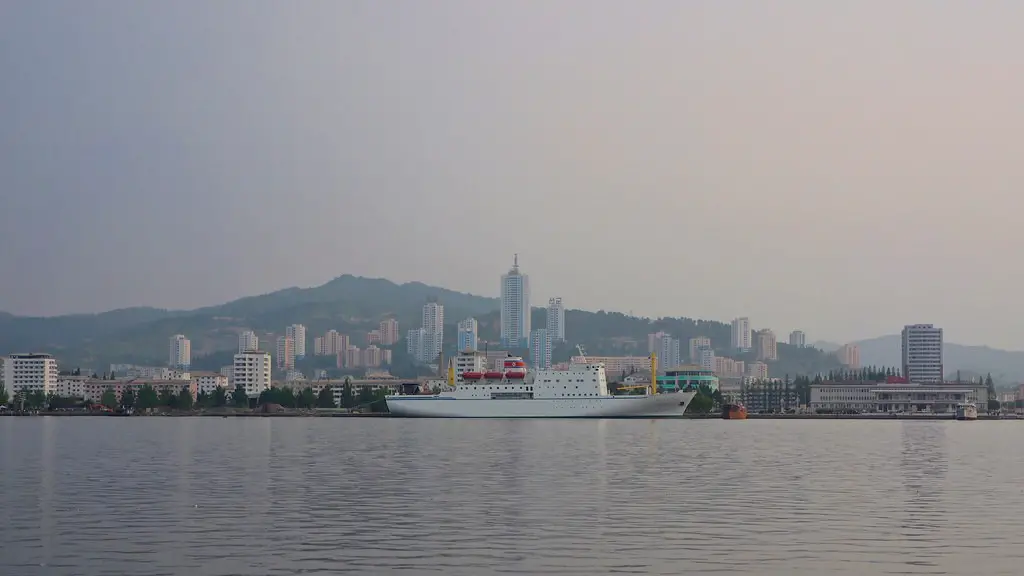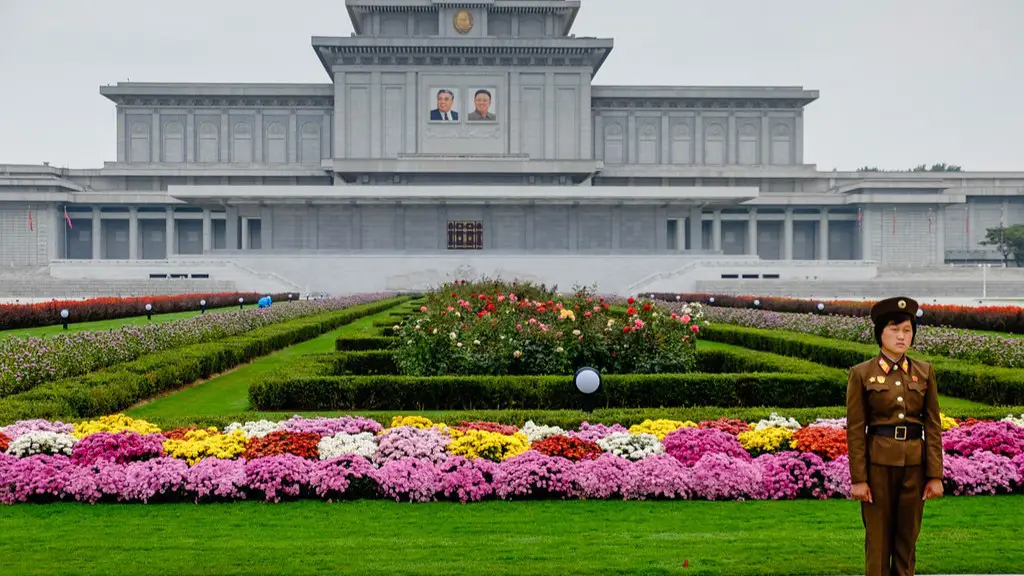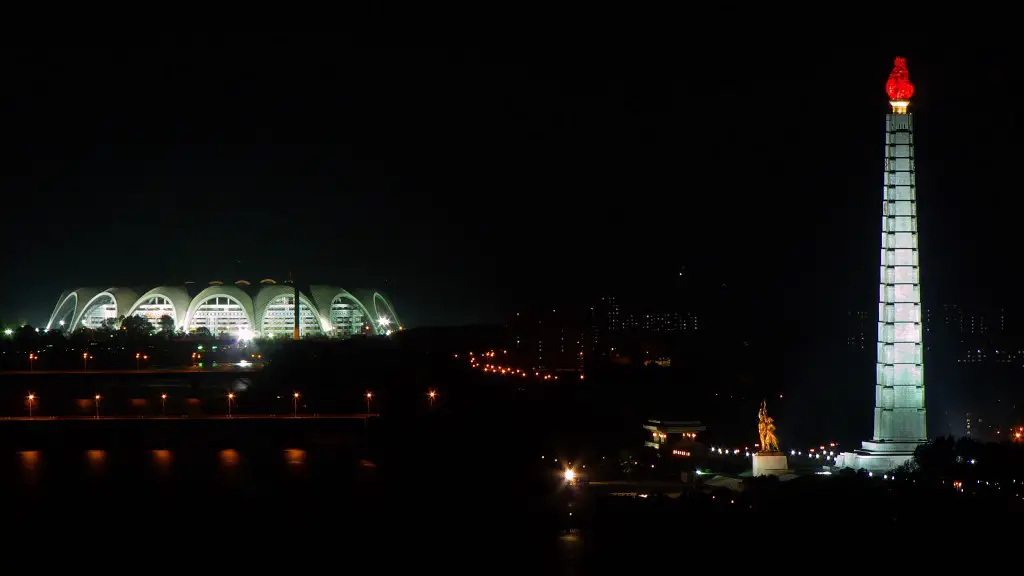North Korea has one of the largest and most impressive submarine forces in the world. While estimates vary, there are at least 70 vessels of various sizes and capabilities, a figure that is more than double the number of submarines of South Korea, its neighbor to the South. But why does it need so many?
North Korea’s main motivation for militarizing their submarine force is to enhance their defensive capabilities. This has been shown through their consistent development of newer, more advanced military vessels and the modernization of their existing submarines.
In addition to their defensive posture, North Korea also has aspirations to use their submarines in an offensive capacity. The country’s submarines are outfitted with various weapons, including torpedoes, missiles, and even nuclear weapons. Their submarines are also equipped with state-of-the-art technology such as sonar, radar, and even satellite tracking systems.
The objectives of North Korea’s submarine force vary depending on the situation. For example, their submarines are used for intelligence gathering, reconnaissance, and anti-ship operations. It is also believed that North Korea has the capability to launch nuclear weapons from the sea.
The size and variety of North Korea’s submarine forces can be attributed to the country’s limited resources. North Korea’s economy is heavily dependent on military spending, and submarines are relatively inexpensive to build and maintain.
Not surprisingly, North Korea’s submarine forces have become an object of international concern. The country’s consistent development and modernization of their submarine forces have been seen as a threat to South Korea, Japan, and the United States.
Analysts believe that the size and capability of North Korea’s submarine forces are unlikely to change anytime soon, as long as the country remains under rule of its current leaders. In the future, North Korea’s submarine force could become even more powerful if it obtains military assistance from other countries.
North Korea’s Missile Program
The development of North Korea’s missile program is closely linked to their submarine force. The country has been working on ballistic missiles since the mid-1970s, and it has become increasingly sophisticated over time. The most prominent example of North Korea’s missile capabilities is the Taepodong-2 missile, which has the potential to strike targets in the US. North Korea has also developed and tested several submarine-launched ballistic missiles (SLBMs) over the past decade. These missiles are designed to be launched from North Korean submarines and are capable of reaching international waters.
The development of North Korea’s SLBMs has been perceived as a major threat by the international community. This is due to the fear that these missiles could be used to launch a surprise attack, or to conduct a nuclear strike against a target. North Korea’s development of SLBMs has also sparked a race to develop missile defense systems among other countries, as they are now faced with the threat of a surprise submarine-launched missile attack.
North Korea’s development of SLBMs has also been seen as a deterrence strategy, as it gives the country the ability to launch an attack without having to worry about retaliation. This has been a common strategy among other countries, such as Russia and China, who have also developed their own SLBMs.
Despite the threats posed by North Korea’s SLBMs and missile program, it is important to remember that the country is still constrained by limited resources. North Korea’s nuclear program has been limited by economic sanctions and its missile program has been constrained by its limited ability to obtain materials and technology. As a result, North Korea’s development of missiles and SLBMs have been slower than that of other countries.
Possible Implications of North Korea’s Submarine Force
The development of North Korea’s submarine force has several potential implications for the region and for the rest of the world. For one, the presence of North Korean submarines in international waters could trigger an international conflict if they are believed to be conducting hostile actions. Additionally, North Korea’s submarines could be used to transport personnel, weapons, and other contraband, which could further heighten tensions between the country and the international community.
North Korea’s submarine force also has the potential to enable the country to launch a surprise attack on its adversaries. This could take the form of a pre-emptive strike or an offensive strike intended to counter an imminent attack. As a result, North Korea’s submarine fleet could further destabilize the region and could lead to a full-scale conflict if not contained.
Finally, the presence of North Korea’s submarines in international waters could make the country an even greater threat to the global community. This is because the country could use its submarines to threaten shipping routes, launch attacks on naval ships, and conduct other forms of economic warfare, all with impunity. Consequently, North Korea’s submarine force could potentially make the region more volatile and could threaten the world’s stability.
Geopolitical Environment Surrounding North Korea
North Korea’s submarine force operates within a complex geopolitical environment. To the east are Japan and South Korea, both of which have tense relations with North Korea. To the west is China, North Korea’s primary ally and trading partner. In the center are the United States and its allies, which have long sought to contain North Korea’s nuclear ambitions. This complex web of relations impacts North Korea’s approach to developing its submarine force and its capabilities.
The United States has taken a hardline stance against North Korea, instituting a range of economic sanctions and ratcheting up its military presence in the region. This has had a significant effect on North Korea’s submarine force, with the country struggling to acquire the necessary materials and technology to build and maintain its submarines. Despite these constraints, North Korea has still managed to increase its submarine fleet and advance its missile program.
In addition to the United States, other countries have also taken an active role in trying to contain North Korea. South Korea and Japan, in particular, have tightened their own surveillance and defense capabilities to counter the threat of North Korean submarine forces. South Korea has also been developing its own submarine force in response to North Korea’s increasingly aggressive behavior.
North Korea’s submarine force is a force to be reckoned with and poses a serious threat to the stability of the region. The country has used its submarines for both defensive and offensive actions and increasing its capabilities, prompting international concern and leading to a wider arms race among other countries. North Korea’s submarine force is unlikely to change anytime soon and could potentially become even more powerful if it obtains military assistance from other countries.
Military Conflict with North Korea
The development of North Korea’s submarine force has increased the risk of military conflict between the country and its adversaries. As North Korea’s submarine force has become increasingly sophisticated, the possibility of a surprise attack has become more real. This has led to a heightened sense of alarm among its enemies and has prompted the development of missile defense systems. At the same time, the risk of a full-scale conflict has also increased, as North Korea could use its submarines to launch a pre-emptive strike or a surprise attack.
If military conflict with North Korea were to break out, it could be a devastating conflict. The country possesses a substantial submarine force and a growing arsenal of nuclear weapons, which could be used to devastating effect. Additionally, North Korean submarines could also be used to launch a surprise attack on its adversaries and further destabilize the region.
In the event of military conflict with North Korea, the United States and its allies would likely engage in a combination of offensive and defensive strategies. This could include a naval blockade, air strikes, and missile defense systems. Additionally, the US and its allies could deploy ground forces to the region to counter North Korea’s submarine threat.
The United Nations has also taken action in response to North Korea’s submarine force. In 2016, the Security Council passed Resolution 2321, which calls for further sanctions against North Korea in an effort to curb the country’s nuclear and missile programs. In the years since, the UN has stepped up its efforts to contain North Korea’s submarine threat through more robust monitoring and accountability measures.
International Cooperation to Contain North Korea’s Submarine Force
In recent years, there has been an increasing focus on international cooperation to contain North Korea’s submarine force. International organizations such as the United Nations and the Association of Southeast Asian Nations (ASEAN) have worked together in an effort to monitor and contain the submarine threat posed by North Korea. These organizations have also worked to enforce economic sanctions and other measures to limit the country’s ability to acquire materials and technology necessary for its submarine fleet.
Other countries have also taken action to contain North Korea’s submarine force. China, in particular, has employed a variety of measures to monitor and contain the country’s military capabilities. This includes tightening its economic ties with North Korea and boosting surveillance in the region. Additionally, China has also sought to strengthen its naval presence in the region to better monitor North Korean submarines.
The US has also been playing a more active role in the effort to contain North Korea’s submarine force. In 2017, the US deployed two nuclear-powered aircraft carriers to the region as a show of force and to further monitor North Korean submarines. In addition, the US and South Korea have worked together to develop their own submarine force in order to counter North Korea’s growing capabilities.
International cooperation is essential if the world is to successfully contain North Korea’s submarine force. Through collaboration and cooperation, the international community can work together to ensure that North Korea’s submarine force does not become a major threat to international peace and security.




